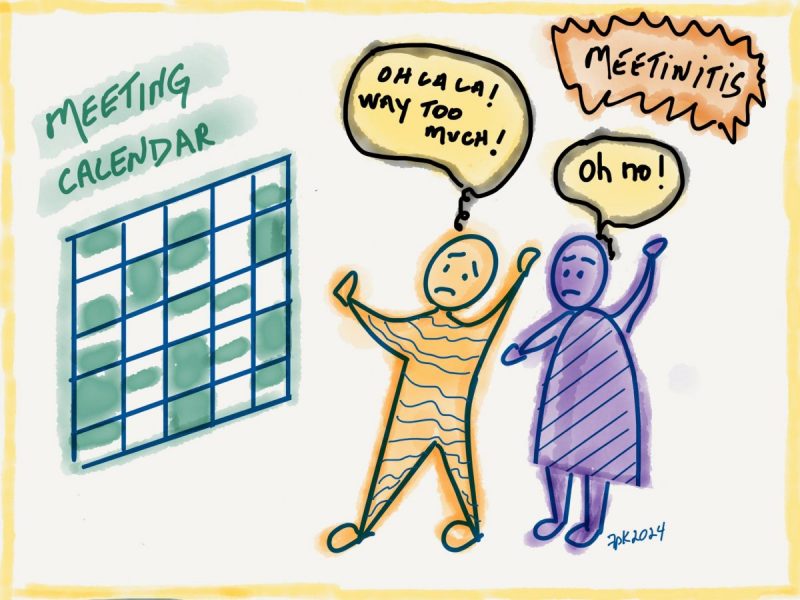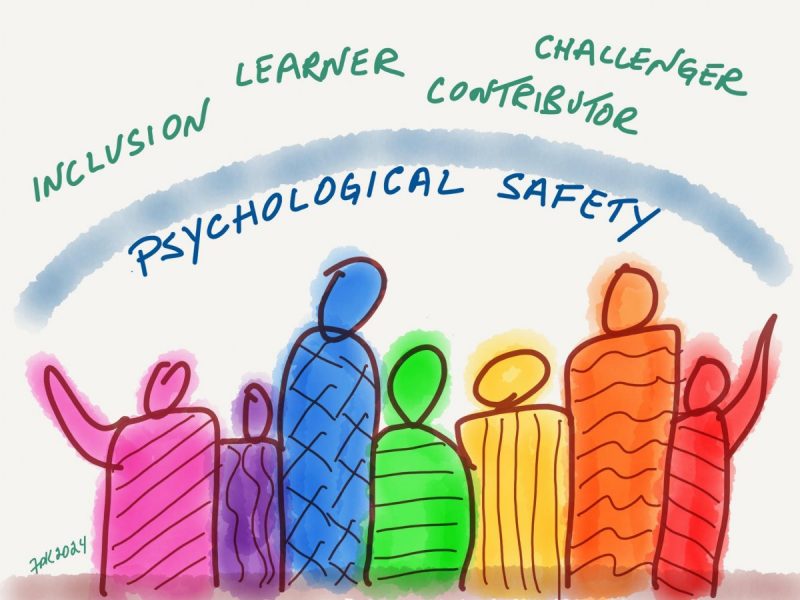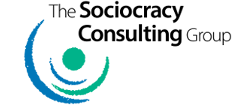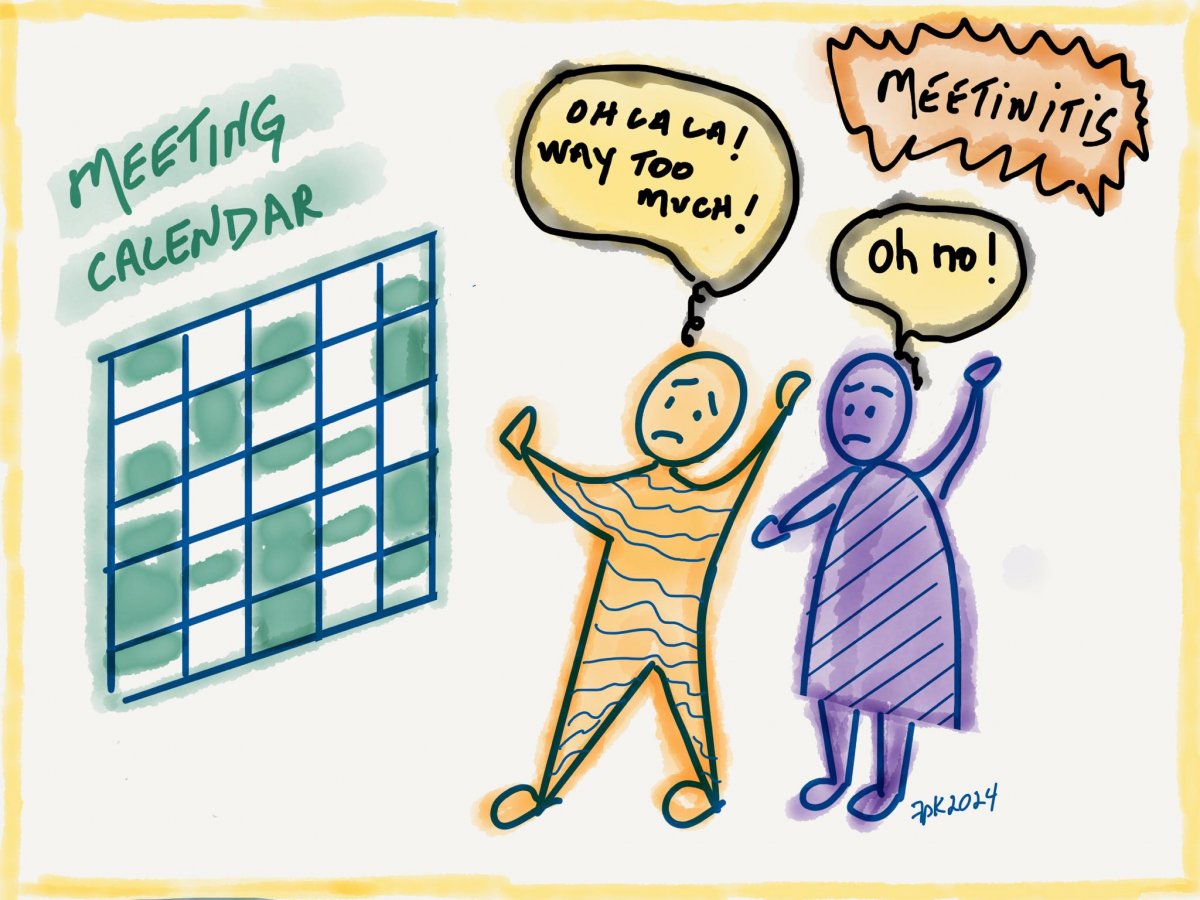 Alan Barker, in his book How to Manage Meetings, used the word “meetinitis” to describe “…the recurrent process in which individuals or companies called for continuous meetings without effective results.” Sound familiar?
Alan Barker, in his book How to Manage Meetings, used the word “meetinitis” to describe “…the recurrent process in which individuals or companies called for continuous meetings without effective results.” Sound familiar?
If ignored, meetinitis will impact your whole organization, resulting in decision bottlenecks, employee disengagement, and reduced productivity. In fact, meetinitis is capable of stripping a team of its motivation and efficiency. The results are harmful and hard to reverse.
To escape the impact of meetinitis, an organization can choose to apply the various practices and processes found in the Sociocratic Circle-organization Method (SCM), which brings more effective and productive meetings while also reinforcing psychological safety.
Why are meetings held?
Before diving into the SCM practices and processes, let’s examine the purpose of a meeting by asking, Why do we meet? You need to clearly ascertain the result you’re looking for. Is it to make policy decisions? Move a project forward? Communicate information? Or to build connections between participants? It’s understandable that people end up feeling like they’ve wasted their time in a meeting if they don’t know its purpose.
Another question that can be useful is, What type of meeting is it? Is it a meeting about who is doing what? In the SCM we call that an operational meeting. Or is it a meeting about how we do what we do? That’s a policy meeting in SCM terms. Often, we skip even thinking about this question. And yet, to be effective, it’s essential to know.
A meeting in an operational mode works “in” the organization, coordinating and delegating the work to be done. In operational mode, we are carrying out or coordinating the specific activities that generate our products and/or services, guided by our previously made policies. You could say we’re in the kitchen, making sure the cooking is going well!
A meeting in policy mode works “on” the organization, deciding on the organization’s direction, structures, and processes. In policy mode we determine the policies that guide, inform, support, and direct our operational activities. You could say we’re planning next month’s menu while the cooks are working in the kitchen.
Although I recommend holding these two types of meetings at different times, some organizations may combine them in one single session. They first have the policy meeting and then the operational meeting or vice versa, with a 5-minute break in between. This is fine as long as the distinction between the two modes is clear, giving the participants a chance to “change hats”. Unless making the distinction is done with transparent intention, an organization becomes vulnerable to meetinitis, which can hinder it from reaching its aims.
 In a previous blog, How Safe is Your Team?, I wrote about how psychological safety counters workplace toxicity. Best practices for curbing meetinitis will be much more effective if an organization implements the four stages of psychological safety described by Timothy R. Clark. These are inclusion safety, learner safety, contributor safety, and challenger safety.
In a previous blog, How Safe is Your Team?, I wrote about how psychological safety counters workplace toxicity. Best practices for curbing meetinitis will be much more effective if an organization implements the four stages of psychological safety described by Timothy R. Clark. These are inclusion safety, learner safety, contributor safety, and challenger safety.
SCM practices and processes will shine even more when the four stages of psychological safety are woven throughout your meetings.
For a meetinitis-free environment
Facilitating the meeting to include everyone present confirms that every voice counts. This means that the facilitator uses rounds. A round is a process that systematically gathers questions, reactions, or any type of comments from everyone in turn. TSCG colleague Sheella Mierson explains this in depth in her blogs, Speaking in Rounds to Help People Think (Part I and Part II).
Unless there is explicit turn-taking, we hear more from those who are quick to speak or raise a hand and less, if at all, from those reluctant to do so. When we take turns, everyone has the same opportunity to share their ideas, and together find the best way forward. It brings equivalence and is a great way to create inclusion safety.
Advanced preparation for effective and productive meetings is key. Ensure the preparation of an agenda, supported by relevant documents, and send it out in advance. Receiving a “package” in advance of the meeting is an explicit invitation to prepare beforehand and encourages learner safety. How so? Participants can request clarification before the meeting, without worrying about being judged in the meeting with everyone present. This is an effective way to get familiar with an upcoming issue before it is formally raised in the meeting.
Consider starting and ending each meeting with a welcoming round and a closing round, respectively. The short time it takes is a valuable investment in avoiding meetinitis. Let me explain why.
The welcoming round asks each participant “What is on your mind?” This can help leave behind any preoccupations and create the inner space to concentrate on the flow of the meeting. Participants can then contribute more fully to discussions and decision-making. The contributor safety fosters a team spirit, as everyone is committed to the same goal. A great protection against meetinitis.
The closing round asks participants two questions: “What went well? What can be improved?” How can we improve if we don’t think about what could be changed for the better? This round is fundamental to ongoing development of a team. And knowing that such a closing round is part of the meeting agenda generates challenger safety, the safety to challenge the status quo. What a great feeling to be free of the worry about being punished or ridiculed for raising your ideas for improvement! Another way to reduce meetinitis in a meeting.
The good news is this: We can prevent meetinitis! Begin by applying some simple measures, such as the best practices and processes found in the Sociocratic Circle-organization Method (see our White Paper), and you will reap effective results in your meetings.
To learn more about avoiding meetinitis, contact us for a free introductory consultation.
Thanks to Sheella Mierson for editing assistance with this blog.
 A founding member of The Sociocracy Consulting Group, Francine Proulx-Kenzle’s vision is a world in which all voices are heard with respect and candor, and where decisions are made collaboratively to contribute to better working and living environments.
A founding member of The Sociocracy Consulting Group, Francine Proulx-Kenzle’s vision is a world in which all voices are heard with respect and candor, and where decisions are made collaboratively to contribute to better working and living environments.




